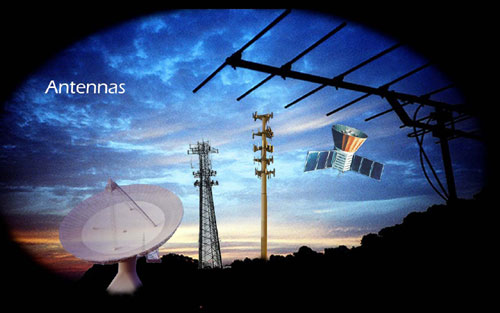TECHNOLOGY FOCUS
Plasma antennas are not just another antenna. They have applications in telecommunications, 5G, RADAR, GPS, plasma antennas operating at 222 nm for the inactivation of SARS-CoV-2 and other viruses that cause pandemics, plasma antennas operating at 95 GHz to non-lethally stop shooters, atmospheric plasma antennas operating from aircraft to create ion beams that cause raindrop coalescence and hence rain to mitigate the world wide drought problem and to extinguish forest fires. Plasma antenna coils in MRI machines give better imaging than standard MRI machines that use metal coils. Plasma gradient coils used in an MRI machine can eliminate the banging noise that many people do not like. Plasma coils used in an MRI/ PET machine can make it easier to find tumors. Since x-rays and gamma rays do not get attenuated through plasma coils whereas they do through metal coils.


COURSE CONTENT
The course content will consist of beam steering of plasma antennas, high powered plasma antennas, plasma frequency selective surfaces, plasma waveguides, and thermal noise in plasma antennas.
WHO SHOULD ATTEND
The people who should attend should have taken the first course on plasma antennas and have a BS degree or European Diploma in physics or electrical engineering. No background in antennas or plasma physics is required. Basic electromagnetics, antenna theory, and plasma physics will be taught.

Day 1
8. Plasma Frequency Selective Surfaces
8.1 Introduction
8.2 Theoretical Calculations and Numerical Results of Plasma FSS
8.2.1 Method of Calculation
8.2.2 Scattering from a Partially Conducting Plasma Cylinder
8.3 Results
8.3.1 Switchable Plasma Bandstop Filter
8.3.2 Switchable Plasma Reflector
Day 2
9. Experimental Work
9.1 Introduction
9.2 Fundamental Plasma Antenna Experiments
9.3 Suppressing or Eliminating EMI Noise Created by the Spark-Gap Technique
9.4. Conclusions on the Plasma Reflector Antenna
9.4. Plasma Waveguides
9.5 Plasma Frequency Selective Surfaces
9.6 Pulsing Technique
9.7 Plasma Antenna Nesting Experiment
9.8 High-Power Plasma Antennas
9.9. The High-Power Problem
9.10. The High-Power Solution
9.11. Experimental Confirmation
9.12. Conclusions on High-Power Plasma Antennas
9.13. Basic Plasma Density and Plasma Frequency Measurements
9.14. Plasma Density Plasma Frequency Measurements with a Microwave Interferometer and Pre-ionization
9.15. Experiments on the Reflection in the S-Band Waveguide at 3.0 GHz with High Purity Argon Plasma.
9.16. Ruggedization and Mechanical Robustness of Plasma Antennas.
9.17. Embedded Plasma Antenna in Sandstone Slurry.
9.18. Embedded Plasma Antenna in SynFoam
9.13 Miniaturization of Plasma Antennas.
Day 3
10. Directional and Electronically Steerable Plasma Antenna Systems by Reconfigurable Multipole Expansions of Plasma Antennas
10.1 Introduction
10.2 Multipole Plasma Antenna Designs and Far Fields
11. Satellite Plasma Antenna Concepts
11.1 Introduction
11.2 Data Rates
11.3 Satellite Plasma Antenna Concepts and Design
12 Plasma Antenna Thermal Noise
12.1 Introduction
12.2 Modified Nyquist Theorem and Thermal Noise for Plasma Antennas.
Dr. Anderson has published texts that are a recommended reference. The references are not required for this course.
Plasma Antennas, Second Edition, (Artech House, 2010) ISBN: 9781630817503
My original book titled “Plasma Antennas”, (Artech House, 2010) ISBN: 78-1-60807-143-2

